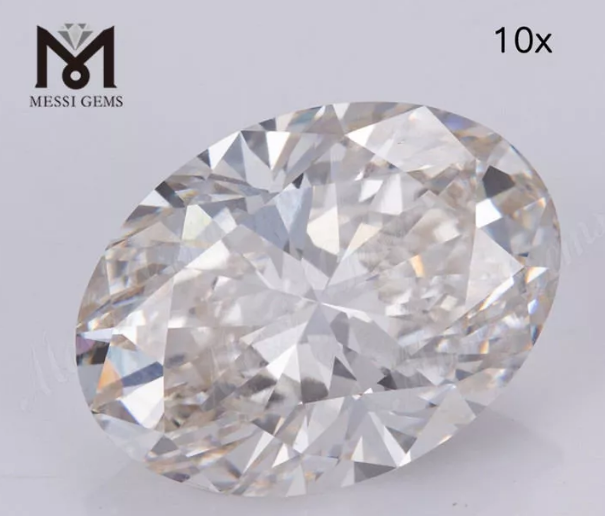In 2018, a team of scientists announced the creation of the largest synthetic diamond ever produced, weighing in at a massive 155 carats. This diamond, produced using a process known as chemical vapor deposition, or CVD, represents a major milestone in the world of synthetic diamonds. In this article, we'll explore the implications and potential applications of this incredible feat of engineering.
Synthetic diamonds are created in a laboratory setting using advanced technology that replicates the conditions present in the earth's mantle. CVD is one of the most popular methods for producing synthetic diamonds, as it allows for precise control of the diamond's size, shape, and quality. In this process, a gas mixture is introduced into a vacuum chamber, where it is heated and broken down into its component atoms. These atoms then deposit onto a substrate, forming a diamond layer that grows over time.
The 155-carat synthetic diamond, produced by a team at the Carnegie Institution for Science in Washington D.C., is more than twice the size of the previous record-holder. The diamond was grown over a period of several weeks and required specialized equipment to handle its size and weight. The team behind the diamond believes that it could have a range of applications, from industrial uses such as cutting tools and electronics to high-end jewelry and art pieces.

One of the most exciting implications of the world's largest synthetic diamond is its potential to revolutionize the diamond industry. Natural diamonds have long been associated with luxury and status, but the production process is often fraught with ethical concerns and environmental impact. Synthetic diamonds offer a sustainable and ethical alternative, and the ability to produce larger diamonds opens up a range of new possibilities for designers and consumers alike.
In addition to its potential applications in jewelry and industry, the 155-carat synthetic diamond has also attracted attention from the scientific community. Diamonds are one of the most versatile materials in the world, with a range of unique properties that make them ideal for a variety of scientific and technological applications. From quantum computing to biomedicine, synthetic diamonds have the potential to drive innovation and progress in a wide range of fields.
Of course, the production of such a large synthetic diamond is not without its challenges. The process of growing a diamond requires a significant amount of energy and resources, and there are concerns about the impact of large-scale synthetic diamond production on the environment. Additionally, there are questions about the long-term viability of synthetic diamonds as a sustainable and ethical alternative to natural diamonds.
Despite these challenges, the creation of the world's largest synthetic diamond represents a major breakthrough in the field of diamond synthesis and opens up new possibilities for innovation and creativity. As technology continues to advance, it's likely that we'll see even larger and more complex synthetic diamonds in the years to come. Whether in the form of high-end jewelry or cutting-edge technology, the world's largest synthetic diamond is sure to leave a lasting impact on the world of diamonds and beyond.
